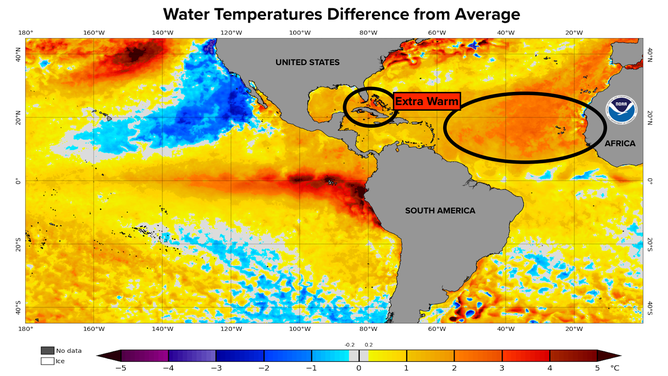El Nino's impact on extreme ocean temperatures and what that means for hurricane season
El Niño increases wind shear in the Atlantic, which can make it harder for tropical systems to form but temperatures are so warm in the Atlantic providing the fuel for hurricanes. Atmospheric science professor Ben Kirtman said that fuel may be strong enough to overcome wind shear-effect from El Niño.
How El Niño influences extreme global ocean temperatures impacting hurricane season
University of Miami Professor of Atmospheric Sciences Ben Kirtman talks to FOX Weather Meteorologist Amy Freeze about what impacts El Niño and climate change have on systems in the tropics.
The combination of the El Niño weather pattern and unprecedented warm ocean temperatures make forecasting tropical systems more complicated this hurricane season.
"What's happening in the Atlantic is unprecedented at the moment," said atmospheric science professor Ben Kirtman. "We haven't seen this in probably 125,000 years."
Sea surface temperatures have been warmer than average, and the Central Atlantic set records for June and July. Around South Florida, waters have reached the upper 90s and even touched 101 degrees in the Everglades.
NOAA FORECAST CALLS FOR HALF OF WORLD’S OCEANS TO EXPERIENCE HEAT WAVE CONDITIONS THIS YEAR
Water temperatures in the Pacific Ocean are also warm because of the influence of the El Niño oscillation.

Recent South Florida sea surface temperature readings from buoys.
(FOX Weather)
Kirtman, with the University of Miami Rosenstiel School of Marine, Atmospheric, and Earth Science, explained ocean temperature records aren't just being broken by a small amount.
"Normally, it's a tenth of a degree or a couple of tenths of a degree. We're having records being broken by two, three, four, maybe even five degrees. And so that's tremendous," Kirtman said. "We don't know what the implications are going to be for sure."
These warm waters could spell trouble for the ongoing hurricane season and are already creating problems for marine life, including coral reefs.
"If we have the warm water waiting as soon as the storm starts to stir," FOX Weather Meteorologist Amy Freeze says, "not only can it intensify out in the open waters at the Atlantic, it can also rapidly intensify when it gets close to a place like Florida."
However, El Niño increases wind shear in the Atlantic, making it harder for tropical systems to form.

Water temperatures compared to average.
(NOAA)
"On the other hand, the temperatures are so warm in the Atlantic, and that's the fuel for the hurricanes. So that local fuel may be so strong that they'll be able to overcome that shear effect from El Niño," Kirtman said.
CRITICAL OCEAN CURRENT COULD COLLAPSE SOONER THAN EXPECTED, STUDY FINDS
Kirtman said different forecasting models can incorporate these effects to make predictions. Still, even with that, this hurricane season's forecast has already changed because of El Niño and the warm water.
"This is a competition between the El Niño effects and the local temperatures in the Atlantic. And we don't know for sure who's going to win out … Normally in El Niño, we would say well-below-normal probability," Kirtman said. "But now we're saying there's a significant probability of normal and even an active hurricane season."
Can we separate effects of climate change vs. El Niño?
Is there a difference between global ocean warming from climate change and what we see now because of El Niño? Kirtman said we are currently experiencing both.
"There's a component of this that's due to El Niño. But the fact that the warming is unprecedented just about everywhere is indicating that warming of the oceans due to climate change has really ratcheted up," he said. "So a significant component of this is due to greenhouse gas emissions and the climate system's response to those greenhouse gases."
